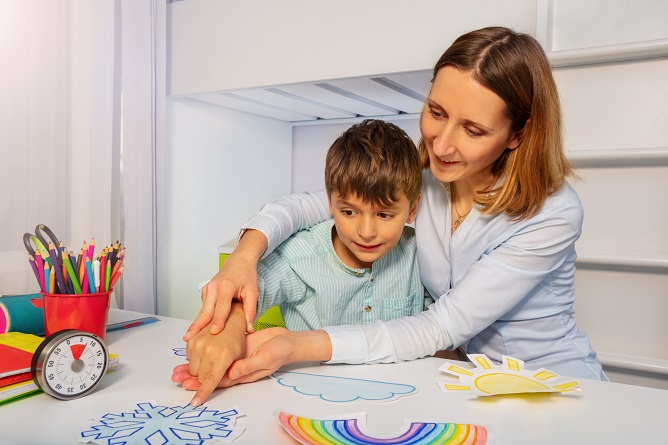
Learning will always look a little different for each child. However, it takes a more extensive turn for children with Autism Spectrum Disorder or ASD. Here are the ways that learning for children with ASD is different:
- Skill development
Children with ASD usually develop at a slower rate than typically developing children. - Attention and interaction
Children with ASD may not respond to their names, use eye contact or point to communicate, or smile or wave without being prompted. - Control and regulation
Children with ASD usually have a hard time focusing, paying attention, controlling their frustrations, organizing their thoughts, etc. - Perspective
Children with ASD may not see the ‘big picture’ or read the room. For instance, he/she will be able to remember the fine details of a photo but not get what it means. - Emotional cues
Difficulty in recognizing emotions, facial expressions, voice of tone, body language, and in turn, managing their very own emotions.
Understanding these challenges is key to helping them find the best ways to learn. Alongside these, you must make sure that you enroll them in an institution that knows the importance of putting measures in place for those who have learning and behavior disorders, namely an Individualized Education Program (IEP), and a teaching staff with ABA training and culturally competent training, among others.
That said, if your child’s current curriculum doesn’t support these, as parents and guardians, you can rally for such training as well as other healthcare training to be included in their practice.
We provide training services at our very own learning institute at EDS Learning Institute for general and special education teachers, social workers, and shadow teachers/teacher aides, among other professionals for this very purpose. For more information about our programs and training services, please don’t hesitate to contact us.



